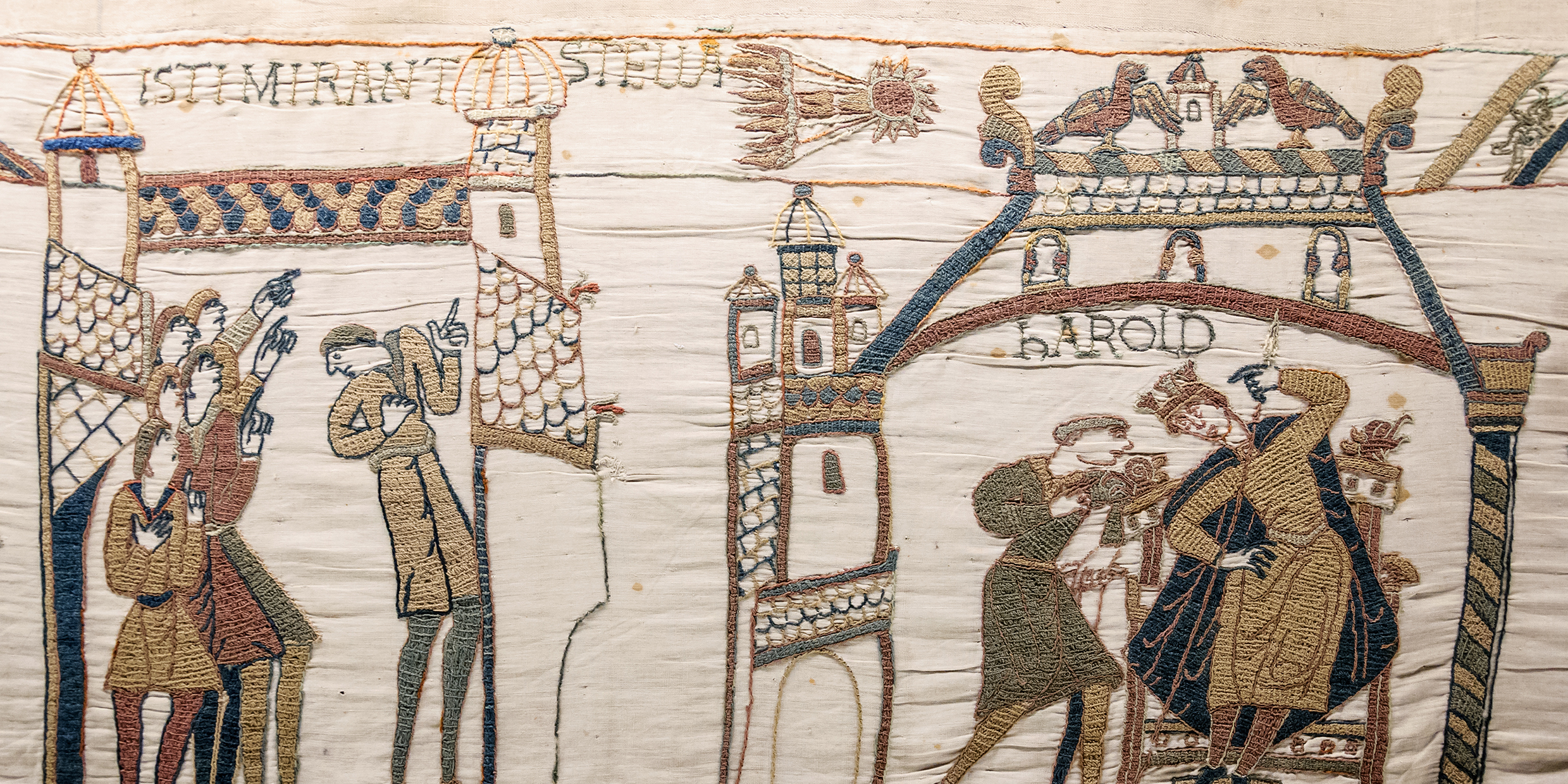Originally published 26 September 1983
In 1948 Halley’s Comet turned the dark corner of its ellipse far out beyond the planet Neptune. Recorded only by the astronomers’ calculations, it leaned into its sunward curve, in the words of poet Ted Hughes, “like a skater on the thin ice of space.” Today it is gliding past the orbit of Saturn, gathering speed in its fall toward the sun. In the winter of 1985 – 86 it will lash its tail in the evening sky and dart around the sun. Then it will begin its climb back up into the Solar System’s dusky attic.
Halley’s Comet returns every 76 years or so. In 1910 it passed very close to the Earth and presented a full profile of its glowing head and sweeping tail. In 1986 the earth will be on the wrong side of its orbit and we will not get a broadside view of the comet. The upcoming apparition of Halley’s Comet will not be the spectacular show it has usually been in the past, and perhaps not even as bright as some other comets of recent times.
But the 1986 visitor will have other things to say for itself. Halley’s Comet is the only bright comet with a period less than a century. It is the comet whose reappearance was predicted by Newton’s friend Edmund Halley. Relying on Newton’s theory of gravity, Halley calculated that the comet of 1680 would revisit the sun’s neighborhood near the end of 1758.
We now know that Halley’s Comet is the same comet depicted on the Bayeux Tapestry of 1066 as a signal of God’s favor for William’s conquest. It is the comet that frightened Europe in 1456, not long after the fall of Constantinople to the Turks. In 218 it was the “fearful flaming star” that preceded the death of the Emperor Macrinus. Attempts have been made to link the visitation of 12 B.C. with the Star of Bethlehem.
Found once again
In October of last year Halley’s Comet was again recovered with a sensitive electronic “camera” attached to the 200-inch telescope on Palomar Mountain. The honors for being the first to sight the returning comet went to a team of astronomers at the California Institute of Technology. At the time of recovery, the comet was still eleven times further from the sun than the Earth, and very close to its predicted position in the sky.
Astronomers will monitor the approaching comet with continuing interest, using a battery of sophisticated instruments. But Halley’s Comet will not be accessible to the naked-eye observer until January, 1986, only a month before it makes its dash around the sun.
Comets have sometimes been called “dirty snowballs,” a rough metaphor for masses of frozen water, grit, carbon dioxide, methane and ammonia. They are the vagabonds of the sun’s family, children of the cold outer reaches of the Solar System, only occasionally falling inward to visit the sun. Over 700 comets have been discovered, but few of them have provided a satisfying aspect for the viewer without optical aid.
A media event
Take Comet Kohoutek. In March of 1973, Lubos Kohoutek at the Hamburg Observatory in Germany discovered two faint comets on a photographic plate. One of these comets was on an orbit that would take it very close to the sun. It seemed inevitable that it would be very bright, perhaps as bright as the planet Venus.
Kohoutek became a media event. The papers ballyhooed its coming. But, inexplicably, the comet failed to develop its expected brightness. Perhaps it was a virgin comet, approaching a star for the first time, its early brightness blown off by the solar wind.
A different sort of comet was discovered in November 1975 by Richard West, working at the European Southern Observatory in Chile. It was clear from the beginning that Comet West would be brighter than Kohoutek, perhaps one of the brightest comets of the century. It would pass near the sun in the spring of 1976.
March of 1976 arrived in leonine fury, with snow, sleet and ice. At last, on the 8th, at 5 a.m., a wisp of cloud was brushed aside and there it was, Comet West, as bright as a first magnitude star, easily visible to the naked eye and looking exactly as a comet should. The coma burned in reflected sunlight. The tail stretched up from the horizon for three or four degrees. It was much brighter than expected, an object of exceptional beauty. There has been no comet since to equal it.
And now comes Halley’s Comet. Kohoutek won’t return for 80,000 years. Comet West has a period of 15,000 years. When West was last here our Cro-Magnon ancestors were cowering in caves to escape the rigors of the Ice Age. But the period of Halley’s Comet is proportioned to a human lifetime. Many people alive today will remember its last apparition. Seldom are we allowed such full pleasure of anticipation.
It remains to be seen whether Halley’s Comet will be a West or Kohoutek, a sleeper that surprises by its brightness or a ballyhooed space shot that fizzles on the pad. Either way, the comet is certain to offer months of excitement for the viewer who is prepared to savor whatever beauty nature sends along.
Due to the arrangement of the orbits, the 1986 apparition of Halley’s Comet was less dramatic than previous visits. Undaunted, the author witnessed the event from the dark skies of the Australian outback. Halley’s Comet will make a return visit to Earth in 2061. ‑Ed.



